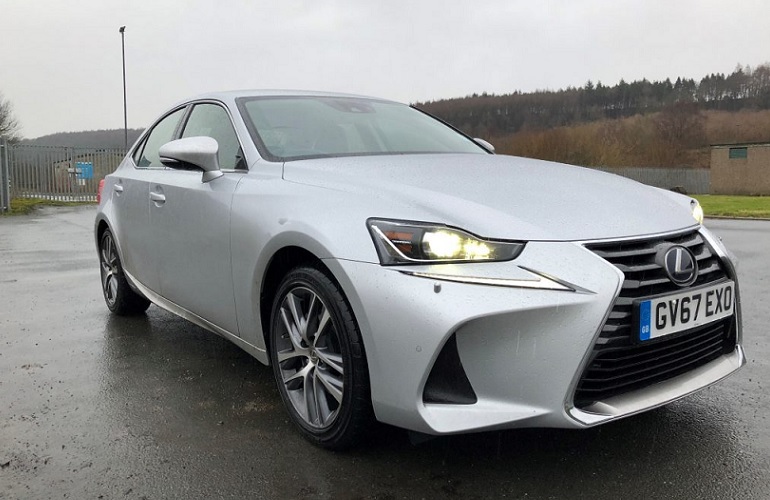New Model Launch
Lexus IS300h
Fashion. Some things come and go. Come to think of it some things just go. Like avocado bathroom suites and Oxford Bags. Some things, however, were never strictly fashionable but seem to come back. Petrol cars for instance, or more specifically petrol hybrid cars.
Toyota and Lexus have stoically backed petrol hybrid drivetrains all through the diesel boom and now seem to have been right all along… So it seemed like a good opportunity to revisit a car that has been around a while and assess how relevant and desirable it is, given the change in context.
The Lexus Is300h (for those of you who don’t know) is a premium mid-size saloon aimed squarely at the BMW 3 Series, Audi A4 and Mercedes C-Class. Over its lifespan it has been offered in diesel but, with hindsight, it never really seemed to suit the car – it came across as well dressed, but spoke in a loud vulgar fashion. Think Piers Morgan.
We’ll get the biggest issue I found, out of the way first. The infotainment setup in the car is miles behind the opposition. (This is the standard Lexus navigation and not the Premium version) However, this car is well into its lifecycle and Lexus have announced a new generation coming in products from later in the year. Strangely, though, the amplifier and speakers fitted (and not the upgraded Mark Levinson system, either) are really good.
Styling is naturally subjective, so we’ll not dwell on it too much, suffice to say I think the car still looks sharp outside today and the interior is reasonably unfussy. The clock does attract attention, though.
Premium. Quality. Words used incessantly by car companies often. With this car both certainly apply.
Small things. You’ll notice them, often subconsciously as it is the absence rather than presence that applies. The windscreen wipers. Silent. I love that. The electric windows. Operate in quick time. In almost silence. Every time. The seats. ‘Quite huggy’ a friend said. Followed by ‘are they lined with Kingspan?, I’m warm already’. The seat heater did help, however.
The meat here, is the Hybrid system. By now, an extremely well developed drivetrain, it works flawlessly. Moving in and out of battery assist is without hiccups or drama. The 2.5 litre petrol engine in this installation helps when longer trips are a thing. The Prius and others with the 1.8 engine get a bit stretched and uneconomical with high miles and constant high motorway speeds. It still isn’t the best use here, but it is better mitigated.
This does touch on the current debate of how, or whether to replace diesel, as a prime propulsion choice. Simply, if the car is large and/or the annual mileage is 20k or over, diesel is still the most fuel efficient. Plenty of people are scratching their heads over mid-30s mpg from a PHEV. But are possibly not charging it much and quite probably undertaking long journeys at high average speeds.
It can be awkward when an employer discovers that a driver’s lower BIK position is being subsidised by an increased fuel bill.
Back at the Lexus, the short version is that better than petrol economy is available, with comparable CO2 levels to a diesel equivalent. Without the 3% (or 4% coming) BIK penalty.
Pleasantly surprised is how I felt. Ignore the multimedia, the CVT doesn’t irritate really (put it in Sport mode if you’re really bothered), and you’ll get used to the US style foot/handbrake. Eventually.
It’s beautifully made, looks well, and drives really sharply. Oh, it’s rear wheel drive like a BMW. You didn’t know?
Paul Titchmarsh
Director of Risk & Manufacturer Relations

